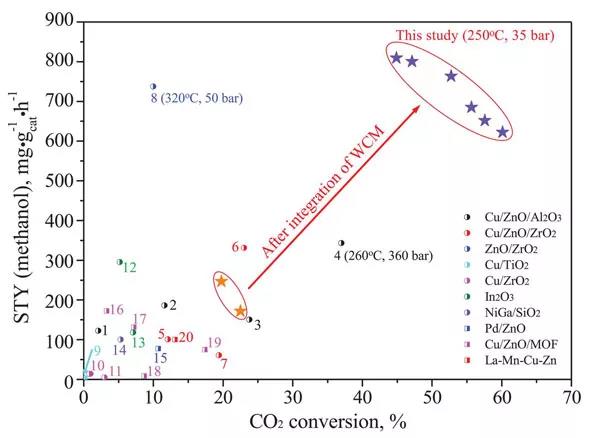Science Today: Na + Gated Water-Conducting Nanochannels Promote CO2 to Liquid Fuel
QQ Academic Group: 1092348845
Detailed
We explored the possibility of making nanochannels to repel small gas molecules about the size of hydrated ions (such as Na +, 6.6Å) for catalysis under high temperature and high pressure conditions. For example, the by-product water strongly inhibits the kinetics and thermodynamics of the hydrogenation of CO2 to a liquid fuel such as methanol. The air-repellent and water-conducting nanochannels can remove water and retain reaction gases and products while increasing the reaction rate and shifting the equilibrium to the direction of product generation. However, the ability to distinguish between water molecules (kinetic diameter 2.6Å) and gas molecules down to H2 (kinetic diameter 2.9Å) is very challenging. In addition, nanochannels need to be assembled without defects into practical separation membranes that can operate at pressures> 200 ° C and> 20 bar.
Today, led by the Miao Yu team (corresponding author) of Rensselaer Polytechnic Institute in the United States, in cooperation with Zhejiang University of Technology, Missouri University of Science and Technology, and the American Institute of Natural Gas Technology, it reported that a centimeter-scale membrane was assembled through a rational design method, Negligible defects, gas barrier water conductivity NaA zeolite nanochannels. The experiment of natural gas dehydration under high temperature and high pressure confirmed the conduction of water, which is most likely due to the gating effect of Na +, which is located in 8 oxygen ring pores and adjusted its effective size. This water-conducting membrane (WCM) greatly improves the CO2 conversion rate and the methanol yield in the CO2 hydrogenation catalytic synthesis in methanol production at high temperature (200 to 250 ° C) and pressure (21 to 35 bar). Related results were published in Science under the title "Na + -gated water-conducting nanochannels for boosting CO2 conversion to liquid fuels".
[Picture and text guide]
Figure 1 Reasonably designed preparation strategy and separation / permeability of water-conducting membrane

Figure 2 DFT simulation of molecular channels through NaA zeolite channels

Figure 3 Conceptual schematic and catalytic performance of a membrane reactor

Figure 4 Comparison of WCMs-catalyzed MR and literature in terms of CO2 conversion and methanol space-time yield

Literature link: Na + -gated water-conducting nanochannels for boosting CO2 conversion to liquid fuels (Science, 2020, DOI: 10.1126 / science.aaz6053)
Source-WeChat public account: Source
- Previous: Nature Communications:
- Next: 1


 About us
About us